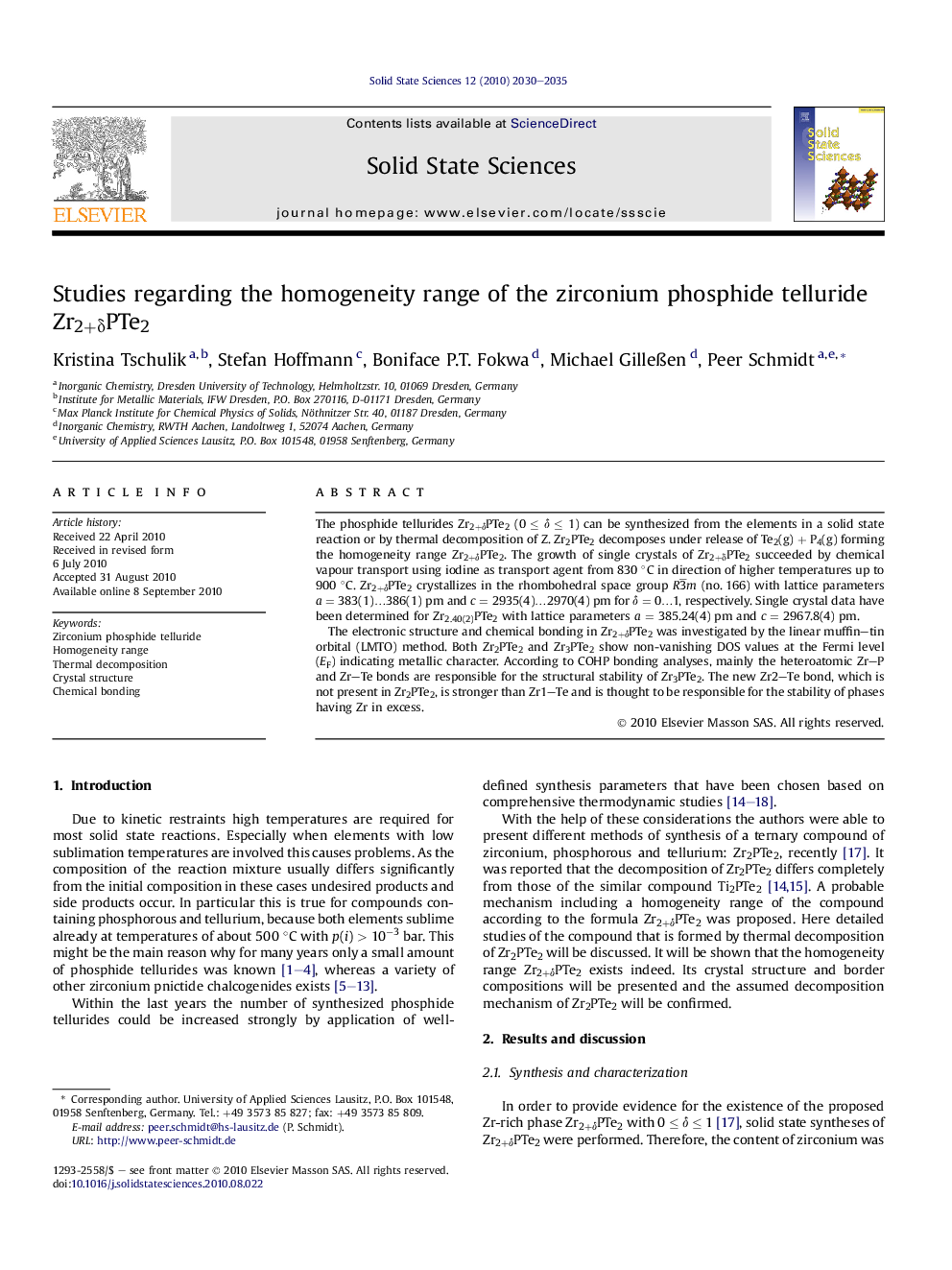| Article ID | Journal | Published Year | Pages | File Type |
|---|---|---|---|---|
| 1505788 | Solid State Sciences | 2010 | 6 Pages |
The phosphide tellurides Zr2+δPTe2 (0 ≤ δ ≤ 1) can be synthesized from the elements in a solid state reaction or by thermal decomposition of Z. Zr2PTe2 decomposes under release of Te2(g) + P4(g) forming the homogeneity range Zr2+δPTe2. The growth of single crystals of Zr2+δPTe2 succeeded by chemical vapour transport using iodine as transport agent from 830 °C in direction of higher temperatures up to 900 °C. Zr2+δPTe2 crystallizes in the rhombohedral space group R3¯m (no. 166) with lattice parameters a = 383(1)…386(1) pm and c = 2935(4)…2970(4) pm for δ = 0…1, respectively. Single crystal data have been determined for Zr2.40(2)PTe2 with lattice parameters a = 385.24(4) pm and c = 2967.8(4) pm.The electronic structure and chemical bonding in Zr2+δPTe2 was investigated by the linear muffin–tin orbital (LMTO) method. Both Zr2PTe2 and Zr3PTe2 show non-vanishing DOS values at the Fermi level (EF) indicating metallic character. According to COHP bonding analyses, mainly the heteroatomic Zr–P and Zr–Te bonds are responsible for the structural stability of Zr3PTe2. The new Zr2–Te bond, which is not present in Zr2PTe2, is stronger than Zr1–Te and is thought to be responsible for the stability of phases having Zr in excess.
Graphical abstractFigure optionsDownload full-size imageDownload as PowerPoint slide
